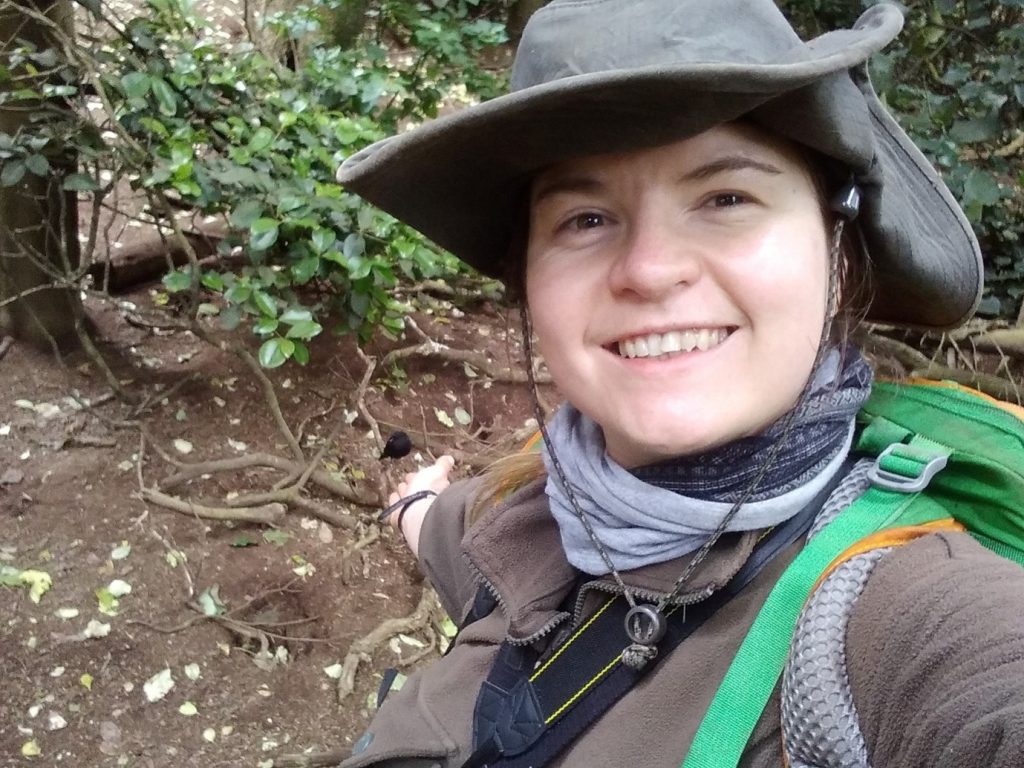Hi all! My name is Katie and I’ve joined the Curlew Country team this season as the Assistant Aviculturist, bringing with me a background in captive breeding and husbandry of a variety of bird species across taxa and hemispheres.
My journey in avian conservation started with a rescued Laughing Kookaburra, which I rehabilitated at a Western Australian wildlife rescue centre during a study abroad year in 2013, and who you might recognize as the tattoo on my wrist. In developing a mutual trust with him through handfeeding, a task his powerful beak was initially reluctant to assist with, I built confidence, a sense of purpose and an appreciation for the unique characters in all birds – as individuals and species -which led me to seek out more experience with them after graduating.

Leaving behind a potential career in wildlife documentary filmmaking, my quest for avian conservation training first took me to Brazil, where I helped to rehabilitate rather charismatic Vinaceous Amazon parrots; and from there to Costa Rica, where I delved for the first time into captive breeding and hand rearing – with Scarlet and Great Green Macaws. I particularly love captive breeding and hand-rearing due to the ability to really get to know the birds in your care. Watching the chicks develop from fresh egg to release, supporting them every step of the way, is an awe-inspiring experience and I feel privileged to share this chapter of the journey with this year’s curlew cohort.

As for how I came into the world of wading birds? I have a much smaller species to thank for that, one which maxes out at approximately one twentieth the weight of an adult Eurasian curlew.
Over the past three and a half years before coming back to the UK to join Curlew Country, I’ve been travelling the length and breadth of New Zealand, with the fortune to join a variety of field and captive-breeding projects with all sorts of species from bush birds to kiwi to seabirds, and even the ancient reptile, the Tuatara, thrown into the mix. While New Zealand is home to some truly weird and wonderful creatures, one little bird with a big attitude really defined my time in the southern hemisphere and solidified my emerging focus on waders: the NZ Shore Plover (aka ‘Tuturuatu’). I was lucky enough to work with the entire captive population of this critically endangered shore bird at three different sites, eventually supervising a new captive-breeding and hand-rearing aviary. Perhaps not as traditionally charismatic as parrots, through daily monitoring I learned how much character wading birds can have in their interactions with each other and the environment. Curious, determined, sometimes a bit too big for their boots, graceful at times and as clumsy as the best of us at others, wading birds are as entertaining as they are integral to their habitats, and I can’t get enough of them!
An absolute highlight and one of my most treasured memories was finally getting the chance to observe the Shore Plover in the wild, in their last natural stronghold in the remote Chatham Islands. Watching this species that I had come to know so closely engaging fully with their natural environment was an incredible reminder of what the hard work and “new-parent worrying” in incubation and rearing is all for. Now it’s time for me to direct those efforts back to where I come from, with the hope of learning a lot more about local conservation from the very knowledgeable team; and what better species to start with than the Curlew? Iconic, and a little bit weird and wonderful itself, the curlew’s charm is undeniable, and I can’t wait to meet our first chicks! 🙂

